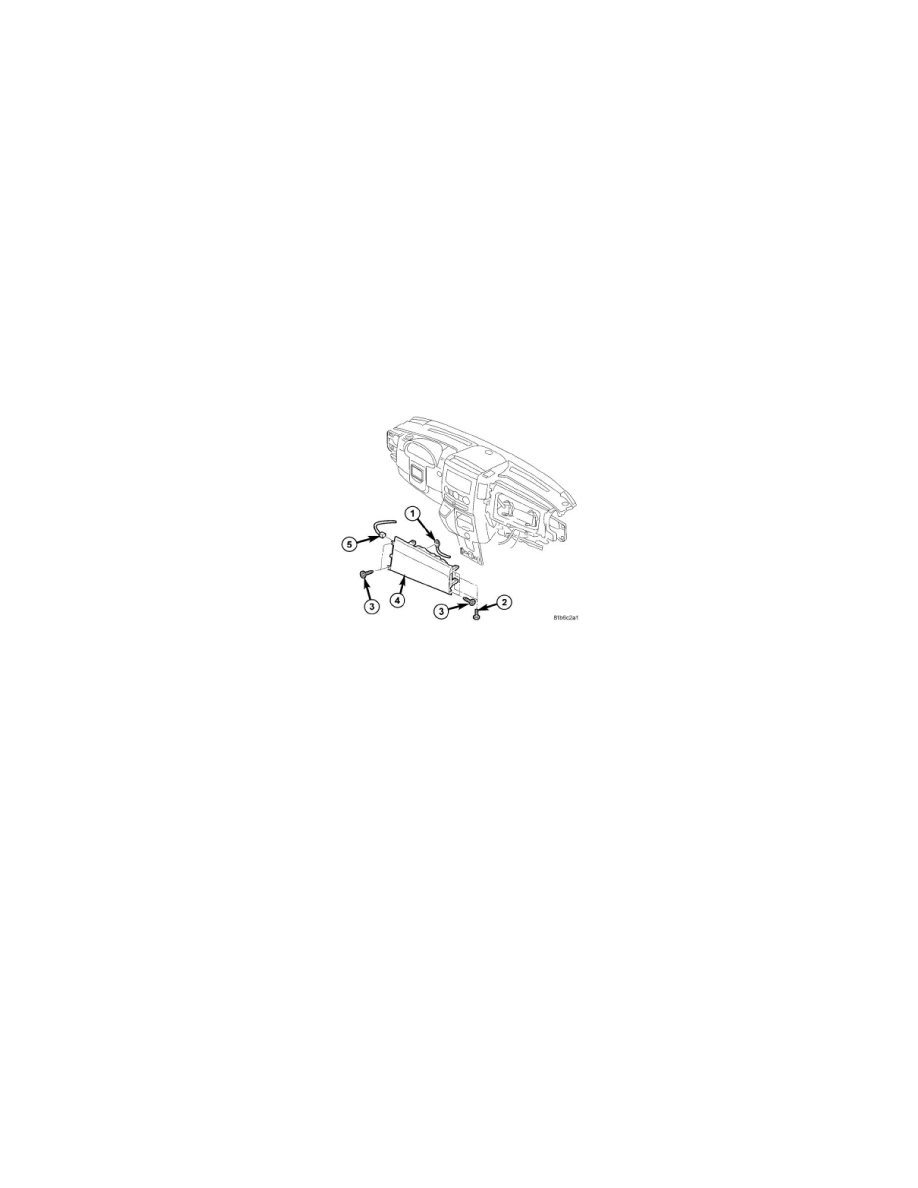Sprinter 2500 V6-3.0L DSL Turbo VIN 45 (2007)

Air Bag: Service and Repair
Passenger Airbag
Removal
REMOVAL
WARNING: To avoid serious or fatal injury on vehicles equipped with airbags, disable the supplemental restraint system before attempting
any steering wheel, steering column, airbag, occupant classification system, seat belt tensioner, impact sensor, or instrument panel component
diagnosis or service. Disconnect and isolate the battery negative (ground) cable, then wait two minutes for the system capacitor to discharge
before performing further diagnosis or service. This is the only sure way to disable the supplemental restraint system. Failure to take the
proper precautions could result in accidental airbag deployment.
WARNING: To avoid serious or fatal injury when removing a deployed airbag, rubber gloves, eye protection, and a long-sleeved shirt should
be worn. There may be deposits on the airbag unit and other interior surfaces. In large doses, these deposits may cause irritation to the skin and
eyes.
NOTE: The following procedure is for replacement of an ineffective or damaged passenger airbag. If the airbag is ineffective or damaged, but not
deployed, review the recommended procedures for handling non-deployed supplemental restraints. If the passenger airbag has been deployed, review the
recommended procedures for service after a supplemental restraint deployment before removing the airbag from the vehicle.
1. Disconnect and isolate the battery negative cable. Wait two minutes for the system capacitor to discharge before further service.
2. Remove the glove box from the instrument panel.
3. Remove the air outlet bezels at the inboard and outboard ends of the passenger airbag door from the instrument panel.
4. Remove the four screws (3) that secure the tabs on the inboard and outboard ends of the passenger airbag door (4) to the instrument panel base
trim.
5. Reach up into the instrument panel glove box opening to access and remove the four screws (2) that secure the stanchions on the back of the
passenger airbag housing to the brackets on the instrument panel support structure. Discard the removed screws.
6. Pull the passenger airbag unit rearward far enough to access the electrical connection on the inboard end of the unit.
CAUTION: Do not pull on the wires to disengage the connector from the passenger airbag inflator connector receptacle. Improper
removal of the connector insulator can result in damage to the airbag circuits or the connector insulator.
7. Disconnect the vehicle wire harness connector (5) from the airbag inflator connector receptacle, which is located on the inboard end of the
passenger airbag housing. To disconnect the connector:
a. Slide the orange Connector Position Assurance (CPA) lock on the connector toward the top of the connector.
b. Depress the connector latch tab and pull the connector straight away from the inflator initiator.
8. Disconnect the ground wire (1) from the passenger airbag housing.
9. Remove the passenger airbag and airbag door from the instrument panel as a unit.
Installation
INSTALLATION
WARNING: To avoid serious or fatal injury on vehicles equipped with airbags, disable the supplemental restraint system before attempting
any steering wheel, steering column, airbag, occupant classification system, seat belt tensioner, impact sensor, or instrument panel component
diagnosis or service. Disconnect and isolate the battery negative (ground) cable, then wait two minutes for the system capacitor to discharge
before performing further diagnosis or service. This is the only sure way to disable the supplemental restraint system. Failure to take the
proper precautions could result in accidental airbag deployment.
